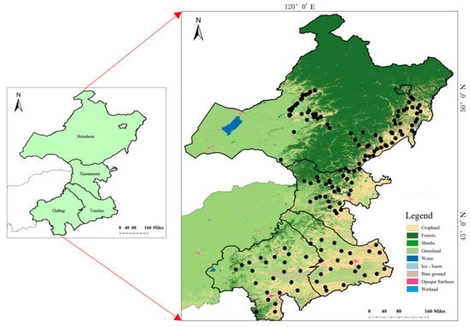- Article
Heavy Metal Pollution and Health Risk Assessment in Black Soil Region of Inner Mongolia Province, China
- Lin Xu,
- Zijie Gao and
- Jie Jiang
- + 1 author
In order to investigate the current status of soil heavy metal pollution, ecological risk, and risk sources in the black soil area of the Eastern Inner Mongolia Province, topsoil (0–20 cm) samples from farmland in the black soil area (N = 163) were collected to determine the contents of seven heavy metals. The levels of soil heavy metal pollution and ecological risk in the study area were evaluated by combining the geo-accumulation index, potential ecological risk index, and static environmental carrying capacity; the positive matrix factorization (PMF) model was used to identify the pollution sources and contributions of heavy metals in the soil and analyze the risk levels to adults and children. The soil was predominantly weakly acidic, with mean values of Cr, Ni, Cu, As, Cd, Pb, and Zn of 61.77, 26.77, 17.07, 12.11, 0.08, 12.61, and 85.71 mg·kg−1. The mean concentrations of heavy metals exceeded the background values, except for Pb, the mean concentration of which was lower than the soil background. Ni concentrations of 6.21% at the sampling sites exceeded the risk screening value for agricultural soils. The geo-accumulation index showed that Cr (55.15%) and As (54.00%) were mainly mild pollutants; the static environmental carrying capacity indicated that the soils were slightly polluted by Ni, As, and Zn; and the potential ecological risk indices of Cd, Ni, and As were at moderate levels. The PMF model analyzed three pollution sources: mixed agricultural practice–transportation sources (39.46%), mineral-related activity sources (27.01%), and pesticide–fertilizer agricultural practices (33.53%). The human health risk assessment indicated that 46.58% of sampling sites posed a carcinogenic risk to children, with Ni as the main carcinogenic element. In conclusion, the potential contamination of As, Cd, Ni, Cr, and Zn in the Eastern Inner Mongolia farmland black soil area should be further studied.
25 November 2025




